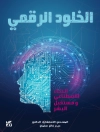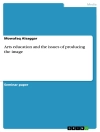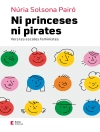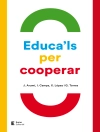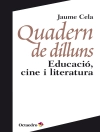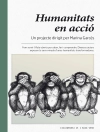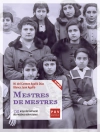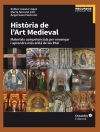This edited volume presents applications and modelling as a world-renowned sub-field of research in mathematics education. It includes the discussion on students’ development of modelling competency through the teaching of applications and modelling. The teaching of mathematical modelling is considered from different perspectives, such as mathematical, pedagogical-didactical perspectives and critical-societal or socio-political perspectives. Assessment practices (local, regional or international) of modelling activities and difficulties with modelling activities at school and university levels, respectively, are discussed. Use of technology and other resources in modelling activities and their impact on the modelling processes are included in the considerations. Teaching practices, teacher education and professional development programs concerning the integration of applications and modelling in school and university mathematics programs are developedin this context.
Innehållsförteckning
Part 1: Overview .- Advancing mathematical modelling and applications educational research and practice.- Survey of interdisciplinary aspects of the teaching and learning of mathematical modelling in mathematics education.- Diversity of perspectives on mathematical modelling: A review of the international landscape.- Part 2: Mathematical modelling at school.- Student presentations of mathematical modelling solutions as a setting for fostering reflective discourse.- Students’ processing types in a computer-based learning environment for mathematical modelling.- The impact of real-world mathematical modelling problems on students’ beliefs about the nature of mathematics.- Study of a problem-solving activity using the extended mathematical working space framework.- Assessment of the competency of grade four students in mathematical modelling: An example from one city in China.- Part 3: Mathematical modelling at university.- Learning of linear transformations involving mathematical modelling supported by technology: A study with undergraduate students.- Validating a multiple-choice modelling competencies assessment.- A mathematical modelling project with biology undergraduates: Using activity theory to understand tensions.- Seeing the forest for the trees: Investigating students’ data moves in a citizen science based model-eliciting activity.- Part 4: Teacher education in mathematical modelling.- Pre-service teachers’ knowledge and noticing competencies for teaching mathematical modelling regarding students’ use of metacognitive strategies.- Using assessment for learning framework to support pre-service teachers’ mathematical modelling activities.- In-service teachers’ transformation of a mathematised task into modelling tasks.- Pre-service teachers’ self-efficacy for teaching mathematical modelling.- A case study of pre-service teachers’ task design and implementation for a mathematical modelling lesson sequence in project-based instruction.- Part 5: Teaching mathematical modelling.- The relationships between statistics, statistical modelling and mathematical modelling.- The dialogic approach of ethnomodelling and its cultural dynamics.- Methods for teaching modelling problems.
Om författaren
Gilbert Greefrath is Professor of Mathematics Education with a focus on secondary education at the University of Muenster (Germany). After receiving his doctorate in mathematics, he taught at universities in Karlsruhe and Cologne. His research focuses on mathematical modelling, the use of digital mathematical tools, the transition from school to university and the development of test and examination tasks.
Susana Carreira is Associate Professor at the University of Algarve and Member of the Research Unit of the Institute of Education of the University of Lisbon, where she collaborates in the supervision of master and doctoral students in mathematics education. Her research activity has been on technologies in mathematics teaching and learning, mathematical modelling and applications, problem solving, mathematical creativity and affect in mathematics education.
Gloria Ann Stillman is an Associate Professor of Mathematics Education at Australian Catholic University (Ballarat). She is a highly experienced Lecturer in primary, early childhood and secondary mathematics education. She has authored many publications on the teaching, learning and assessing of mathematical modelling. She is immediate past President of the International Community of Teachers of Mathematical Modelling and Applications and former Vice President (Research) of the Mathematics Education Research Group of Australasia.



